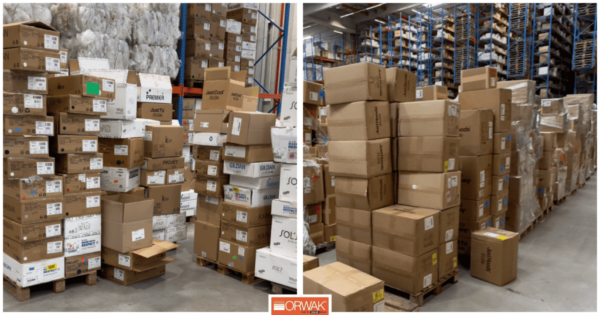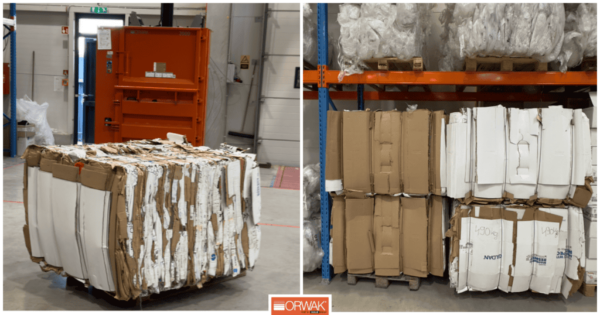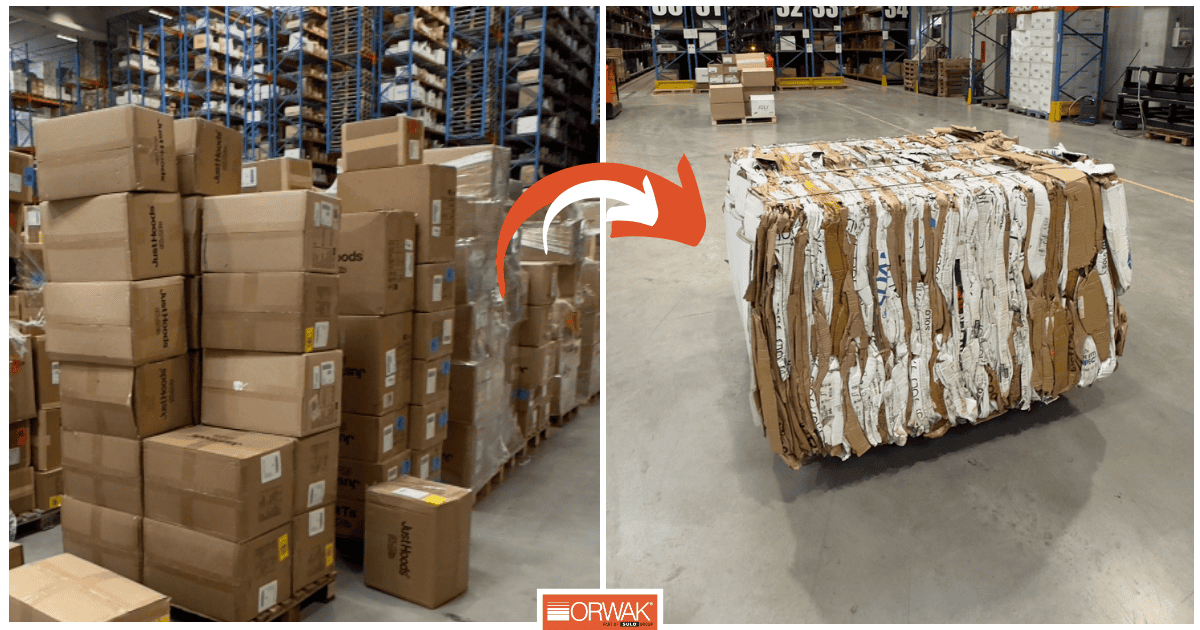This case presents how a clothing distributor with a 20,000 m2 warehouse saves space, reduces costs and makes warehouse operations more efficient by switching to a new waste management approach.
Waste management is an in some respects “invisible” but critical part of modern logistics centers. The large amount of packaging materials that accompany the endless stream of goods is not only a physical burden, but also a significant cost. The example of UTT Europe in Hungary, provided by Orwak Hungary, shows how this area can be made more efficient, organized and economically beneficial.
The downside of logistics: tons of packaging waste per day
As one of the leading clothing wholesalers in Central Europe and the Balkans, UTT Europe processes more than 160,000 orders per year. The company’s warehouse, which is part of a 20,000 m² logistics center, handles more than 16 million products. This generates 6 tons of corrugated cardboard and 1.5 tons of plastic film waste per month – and all this must be managed.
The old method: waste management with a press container
In many cases, using a press container might seem like an obvious solution at first, but it has significant limitations. For example, it is placed outdoors, usually far from the source where the waste is generated. Transporting waste there is time and labor intensive. The press container may take up valuable space – in some cases the entire loading ramp. If the container is full, you must wait for the contractor to replace it, so the waste continues to accumulate in the warehouse. In addition, the compaction ratio is low; about 1:3, which means that the containers fill up quickly and must be replaced frequently, even several times a week, leading to additional expenses.
To convert containerized waste into valuable, recyclable bales, the WMC must perform baling at its recycling site, which results in additional costs. This burden is ultimately borne by the waste generating company: less compacted waste means higher transportation costs.

The new approach: decentralized waste compaction with ORWAK balers
UTT Europe searched for a new approach, a faster more efficient waste management, in line with the expectations of modern logistics centers. Modern balers are not only faster and more space-saving, they also fit perfectly into the logistics process. No more detours, waiting or unnecessary costs – the new approach starts right where the waste is. This shift is not only a technological one but also a real strategic step forward: simpler operation, a reduced CO2 footprint and significantly lower costs.
Orwak Hungary introduced the new approach to UTT Europe and supplied them with the following Orwak balers installed directly next to the waste generation sites: 2 x COMPACT 3110 for compacting plastic film and an ORWAK 3500 heavy duty machine, which can produce cardboard bales of up to 500 kg.

The results speak for themselves
Thanks to the new baling system, waste disposal has been optimized to the maximum: the bales are made in pallet size, making them easy to transport and store and the truck can be filled to capacity. This not only results in fewer transports, but also in lower logistics costs and a smaller environmental impact.
- 90 % less waste volume – more free space in the warehouse
- Less material handling – faster, more efficient workflow
- Continuous baling – no waste accumulation
- Revenue from bale sales
- Accurate waste records, measured in kg
- More sustainable operations – smaller CO2 footprint
The introduction of the Orwak compaction and baling system does not just mean the use of new machines, but a complete rethinking of the waste management approach. Baling streamlines logistics operations, reduces operational costs, simplifies internal workflows and supports the achievement of sustainability goals.
Are you ready for a new effective waste solution? Learn more about our balers!






